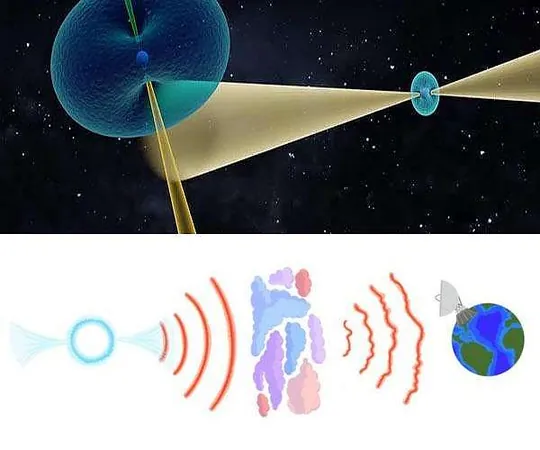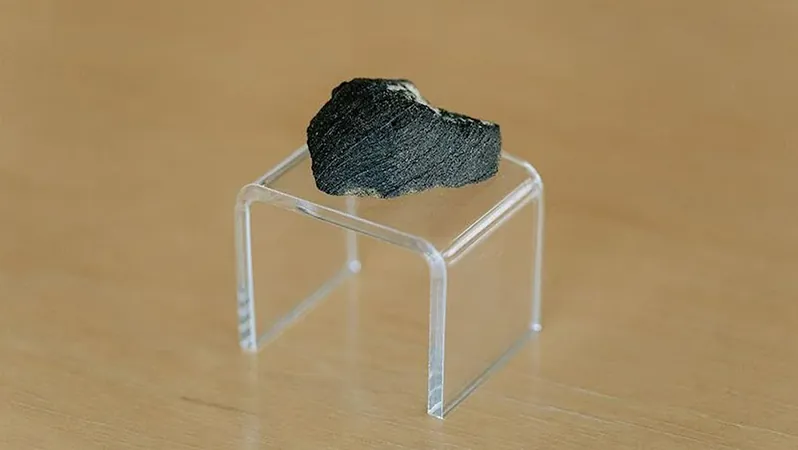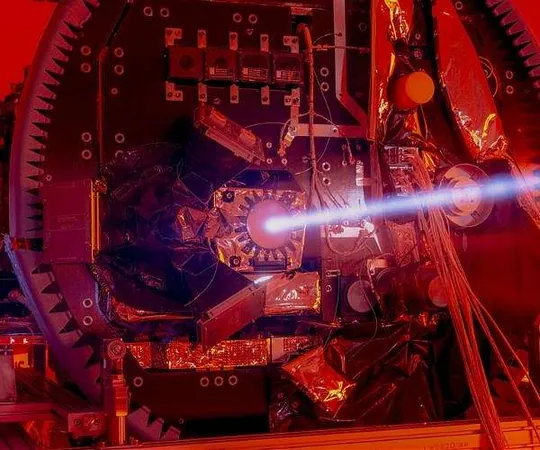
New Study Unveils Impact of Interstellar Medium on Pulsar Signals - A Breakthrough in Astronomy!
2024-11-27
Author: Mei
Impact of Interstellar Medium on Pulsar Signals
In a groundbreaking study published in The Astrophysical Journal, a team from the SETI Institute has uncovered new insights into how pulsar signals are altered on their journey through the interstellar medium (ISM). Pulsars, which are highly magnetized, rotating neutron stars that emit beams of radiation, have long been a subject of fascination among astronomers. Led by Sofia Sheikh, the research involved contributions from undergraduate students in Penn State's Pulsar Search Collaboratory, an initiative established by renowned physicist Maura McLaughlin.
Research Methodology
Using archival data from the now-defunct Arecibo Observatory, the team meticulously measured scintillation bandwidths for 23 pulsars, notably including six pulsars that had never been studied before. The results revealed that the observed bandwidths often surpassed predictions made by existing galactic models, highlighting the need for more accurate ISM density maps to understand the complexities of space.
Importance of Historical Data
Dr. Sheikh emphasized the importance of utilizing large datasets, stating, "Even years after the collapse of the Arecibo Observatory, its historical data continues to be a treasure trove of information that advances our understanding of the galaxy and enhances our studies of phenomena such as gravitational waves."
Understanding Interstellar Scintillation
The phenomenon responsible for distortion, known as diffractive interstellar scintillation (DISS), operates on principles similar to those that cause stars to twinkle. This "twinkling" occurs when pulsar signals pass through clouds of charged particles scattered throughout the ISM. Grasping these distortions is crucial for precise pulsar timing—an essential aspect of research programs like NANOGrav, which investigates the gravitational wave background and its implications for the early Universe.
Implications for Galactic Models
The findings also indicated that current galactic models, which take into account features like spiral arms, align better with observed DISS data. However, discrepancies were noted for newly discovered pulsars, suggesting a need for continuous refinement of these models.
Future Directions
This extensive research was part of the AO327 survey from Arecibo, laying the groundwork for future explorations. The research team has plans to delve deeper into the AO327 dataset, targeting additional pulsars to further enhance ISM density models. Upcoming advancements are expected to bolster collaborations with research groups like NANOGrav, significantly improving the precision of pulsar timing array measurements.
Collaborative Efforts
This joint endeavor included contributions from various institutions, alongside the SETI Institute and Penn State, creating a collaborative environment that merges expertise in astrophysics and astronomy.
Conclusion and Future Discoveries
Don't Miss Out on Future Discoveries! Stay tuned as this team continues to unravel the mysteries of the cosmos and improve our understanding of the universe's intricate fabric!




 Brasil (PT)
Brasil (PT)
 Canada (EN)
Canada (EN)
 Chile (ES)
Chile (ES)
 España (ES)
España (ES)
 France (FR)
France (FR)
 Hong Kong (EN)
Hong Kong (EN)
 Italia (IT)
Italia (IT)
 日本 (JA)
日本 (JA)
 Magyarország (HU)
Magyarország (HU)
 Norge (NO)
Norge (NO)
 Polska (PL)
Polska (PL)
 Schweiz (DE)
Schweiz (DE)
 Singapore (EN)
Singapore (EN)
 Sverige (SV)
Sverige (SV)
 Suomi (FI)
Suomi (FI)
 Türkiye (TR)
Türkiye (TR)